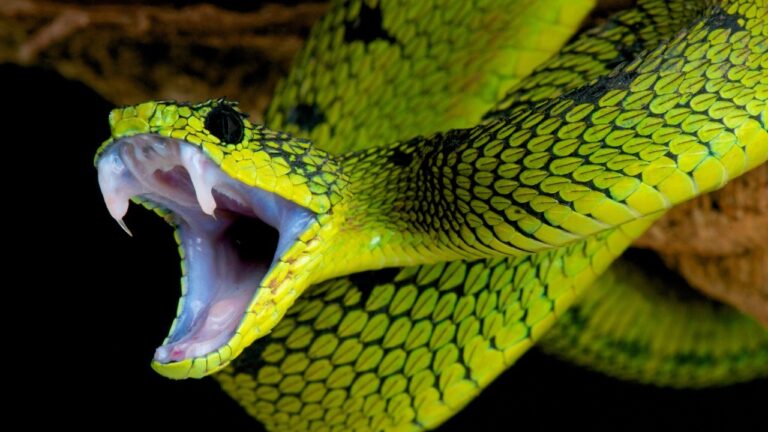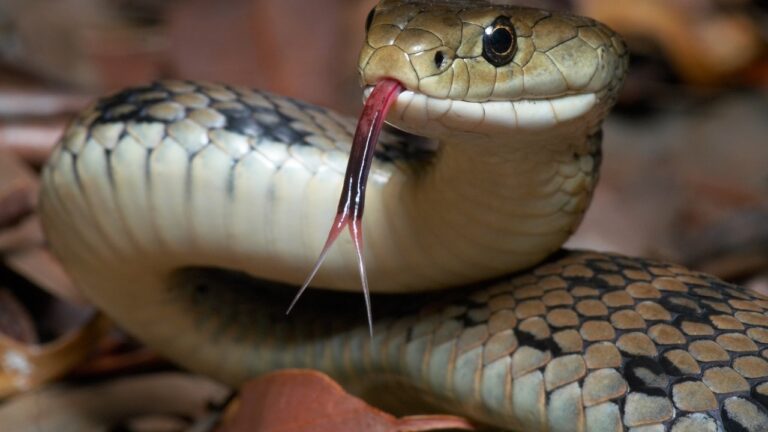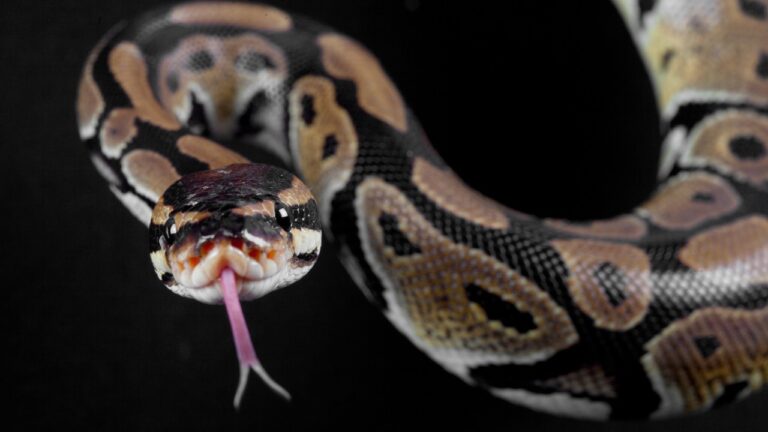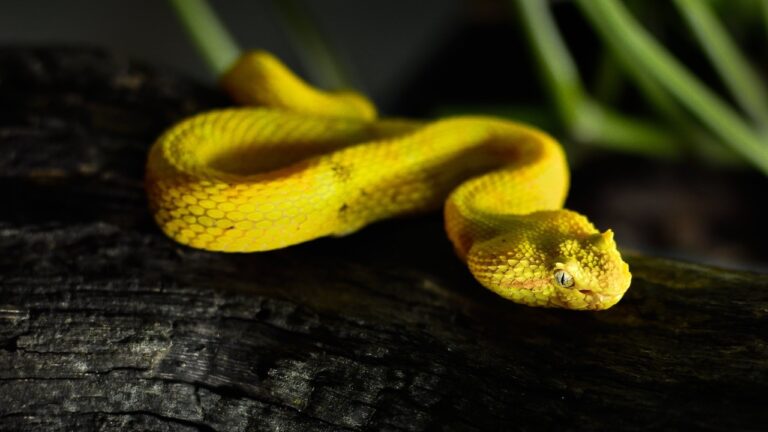Snake Mites Treatment: A Guide for Healthy Reptiles
Overview of snake mites and their impact on reptiles
Snakes are fascinating creatures, captivating us with their sleek bodies and mysterious nature. However, just like any other animal, they are susceptible to various health issues. One such concern that can plague these reptiles is the presence of snake mites. These tiny parasites may seem insignificant, but their impact on a snake’s well-being can be significant.
Snake mites, scientifically known as Ophionyssus natricis, are external parasites that infest snakes. They are commonly found in both wild and captive snake populations, posing a threat to the overall health of these magnificent creatures. These mites feed on the blood of snakes, causing irritation, discomfort, and a host of other problems if left untreated.
Identifying the presence of snake mites can be challenging, as these pests are incredibly small and often go unnoticed. However, there are telltale signs that can help snake owners determine if their beloved serpent is suffering from a mite infestation.
Physical signs such as excessive scratching, sores on the skin, and redness around the eyes are common indicators of mites. Additionally, you may observe abnormal behavior in your snake, such as restlessness, loss of appetite, or lethargy. These symptoms should not be taken lightly, as they can signify an underlying mite infestation that requires immediate attention.
Understanding the dangers associated with snake mites is essential for any reptile enthusiast. These parasites not only cause discomfort to the snake, but they can also lead to more severe health risks. Mite infestations weaken a snake’s immune system, making them susceptible to a range of other diseases and infections, such as snake scale rot, snake mouth rot, snake inclusion body disease, snake respiratory infection, snake septicemia, and many more. The presence of mites can also increase the risk of transmission to other reptiles in the same habitat.
In order to ensure the well-being of your snake and prevent the potential spread of mites, prompt and effective treatment is crucial. In the following sections, we will explore various treatment options, preventive measures, and frequently asked questions to equip you with the knowledge needed to combat snake mites. Whether you choose to tackle the issue yourself or seek professional assistance, understanding the best course of action is paramount in ensuring the health and longevity of your scaly companion.
Identifying Snake Mites
When it comes to keeping your reptile companions healthy and happy, early detection is key. Being able to identify signs of snake mite infestation is essential in ensuring prompt treatment and preventing further complications. In this section, we will explore the physical signs to look out for and the common behaviors exhibited by snakes with mites.
Physical Signs of Snake Mite Infestation
One of the most apparent signs that your snake may be harboring these pesky parasites is the presence of tiny, dark-colored dots moving around on its body. These mites, often referred to as “snake mites,” are small arachnids that feed on the blood of reptiles. They can vary in size, from the width of a pinhead to a grain of rice, and are usually brown or black.
Inspecting your snake’s scales is crucial in detecting snake mites. Look closely for any irregularities or abnormalities. Pay particular attention to the area around the eyes, nostrils, and vent, as mites tend to congregate in these warm, hidden spaces. You may notice tiny red or black dots on the scales, a sign that your snake is hosting these uninvited guests.
Additionally, skin irritation and excessive shedding can be indicators of a mite infestation. If your snake is constantly scratching, rubbing against objects, or displaying signs of discomfort during shedding, it may be due to the presence of mites. Take note of any changes in your snake’s skin texture or coloration, as mites can cause damage to the skin and disrupt the normal shedding process.
Common Behaviors of Snakes with Mites
Snakes with mites often exhibit abnormal behaviors that can serve as red flags for infestation. Keep an eye out for the following signs:
-
Restlessness and excessive movement: Snakes infested with mites may become more active than usual, constantly moving around their enclosure in an attempt to alleviate the discomfort caused by the parasites.
-
Excessive soaking or bathing: Some snakes may submerge themselves in their water dish or spend prolonged periods in their humid hides, trying to alleviate the itching and irritation caused by mites.
-
Lethargy and loss of appetite: In contrast to the previous point, some snakes may become lethargic and lose interest in food due to the stress caused by mite infestation. If your snake suddenly shows a lack of appetite or appears weak, it is essential to investigate further.
-
Rubbing against objects: Snakes with mites often rub their bodies against rough surfaces, such as branches or rocks, in an attempt to dislodge the parasites. This behavior can lead to skin abrasions and further complications if not addressed promptly.
Remember, these signs and behaviors should not be taken lightly, as untreated mite infestations can lead to serious health issues and even death. If you suspect your snake may have mites, it is crucial to take immediate action to protect its well-being.
In the next section, we will delve into the dangers posed by snake mites and the potential risks they pose to other reptiles. Stay tuned!
Internal links: snake scale rot, snake shedding problems
Understanding the Dangers of Snake Mites
Health risks for snakes
When it comes to the health of our scaly friends, it is crucial to be aware of the potential dangers that snake mites pose. These tiny arachnids can wreak havoc on a snake’s well-being if left untreated. Snake mites, also known as snake ticks or reptile mites, are external parasites that feed on the blood of snakes.
One of the most significant health risks for snakes infested with mites is anemia. As these parasites continuously feed on the snake’s blood, they can deplete its red blood cell count, leading to weakness, fatigue, and even death in severe cases. Anemia can impair the snake’s ability to carry oxygen throughout its body, compromising its overall vitality and immune system.
Moreover, snake mites can exacerbate existing health conditions or create new ones. Snakes with weakened immune systems or underlying health issues may be more susceptible to other diseases such as snake scale rot, snake mouth rot, snake inclusion body disease, snake respiratory infection, snake septicemia, snake prolapse treatment, snake shedding problems, snake kidney disease, or snake neurological disorders. The presence of mites can further stress the snake’s body, making it more susceptible to these ailments.
Potential spread to other reptiles
The dangers of snake mites extend beyond the individual snake. These pesky parasites have the potential to spread to other reptiles in your collection, posing a significant risk to the overall health and well-being of your reptilian companions.
Snake mites are opportunistic creatures and can easily hitch a ride on any reptile that comes into contact with an infested snake. This means that if one snake in your collection has mites, there is a high likelihood that the mites will spread to other snakes, lizards, or other reptiles in the vicinity. Snake infectious stomatitis is one condition that can be transmitted through mites, causing painful inflammation in the mouth and affecting the reptile’s ability to eat and drink properly.
To prevent the rapid spread of mites, it is crucial to take immediate action upon discovering an infestation. By doing so, you can protect not only the affected snake but also the overall health and harmony of your reptile collection.
In the next section, we will explore the various treatment options available to combat snake mites and restore the well-being of your scaly companions.
Internal Links:
- snake scale rot
- snake mouth rot
- snake inclusion body disease
- snake respiratory infection
- snake septicemia
- snake prolapse treatment
- snake shedding problems
- snake kidney disease
- snake neurological disorders
- snake infectious stomatitis
Snake Mites Treatment Options
When it comes to treating snake mites, there are several options available to ensure the health and well-being of your reptile companion. Each approach has its advantages and considerations, so it’s important to understand the different methods and choose the one that best suits your situation. Here are the main treatment options for snake mites:
Quarantine and Isolation
Quarantine and isolation are essential steps in managing snake mite infestations. By separating the affected snake from other reptiles, you can prevent the mites from spreading and causing further harm. Isolating the snake also allows you to closely monitor its condition and apply treatments effectively.
During the quarantine period, it’s crucial to create a clean and controlled environment for the snake. This includes using separate equipment, such as feeding tongs and handling tools, to minimize cross-contamination. Regularly cleaning and disinfecting the enclosure and accessories can also help eliminate mites and their eggs.
Natural Remedies
For those who prefer a more natural approach, natural remedies can be effective in treating snake mites. These remedies often involve using natural ingredients or substances that are safe for reptiles but repel or kill mites. Examples of natural remedies include using diluted essential oils, such as tea tree oil or clove oil, as well as herbal sprays or powders.
It’s important to note that while natural remedies can be beneficial, they may not completely eliminate a severe mite infestation. Therefore, it’s advisable to combine natural treatments with other methods for more comprehensive results. Additionally, always research and consult with a reptile veterinarian before using any natural remedies to ensure they are safe and appropriate for your snake.
Chemical Treatments
When faced with a persistent or severe mite infestation, chemical treatments may be necessary. Chemical treatments typically involve using specific products designed to target and eradicate snake mites. These products may come in the form of sprays, dips, or powders that contain insecticides or acaricides.
It’s important to follow the instructions provided by the manufacturer when using chemical treatments. Proper application is crucial to ensure the safety of your snake and to minimize any potential harm to yourself or other pets. Additionally, consider the potential impact of these treatments on the environment and take appropriate precautions.
Professional Assistance
If you’re unsure about how to effectively treat snake mites or if the infestation persists despite your efforts, seeking professional assistance is highly recommended. A qualified reptile veterinarian or an experienced herpetologist can provide expert guidance and may offer specialized treatments tailored to your snake’s specific needs.
Professional assistance can be particularly beneficial if your snake has underlying health issues or if the mite infestation has led to complications such as snake scale rot or snake mouth rot. These professionals can also help identify and address any other potential health concerns, such as snake inclusion body disease, snake respiratory infection, snake septicemia, snake prolapse, snake shedding problems, snake kidney disease, or snake neurological disorders.
Remember, early detection and prompt treatment are key to successfully managing snake mite infestations. By choosing the appropriate treatment option and diligently following the recommended protocols, you can help your reptile companion regain its health and prevent further complications. Stay vigilant, and always prioritize the well-being of your snake.
Preventing Snake Mites
When it comes to keeping your reptiles healthy and free from pests, prevention is key. By implementing proper preventive measures, you can significantly reduce the risk of snake mite infestations. In this section, we will explore some effective strategies to prevent snake mites from becoming a problem for your beloved snakes.
Regular Cleaning and Disinfection
Maintaining a clean and hygienic environment is crucial in preventing snake mites. Regularly clean and disinfect your snake’s enclosure, including all accessories and hides. Use a reptile-safe disinfectant that is specifically designed for snake enclosures. Thoroughly wipe down all surfaces, paying close attention to crevices and corners where mites may hide.
Additionally, regularly remove and replace substrate, as mites can lay their eggs in the bedding. Choose a substrate that is easy to clean and does not retain moisture, as damp environments can attract mites.
Proper Quarantine Protocols
One of the most effective ways to prevent snake mites from infesting your reptile collection is to implement proper quarantine protocols. Always quarantine any new snakes before introducing them to your existing collection. This allows you to closely monitor the new arrivals for any signs of mites or other health issues before they have the chance to spread.
During the quarantine period, keep the new snakes in a separate enclosure, ideally in a different room. This isolation period should last for at least a month, giving you ample time to observe the snakes for any signs of mites. It is crucial to avoid any contact between the quarantined snakes and your existing collection.
Monitoring and Early Detection
Regular monitoring and early detection are vital in preventing snake mite infestations from spiraling out of control. Perform routine inspections of your snakes, checking for any physical signs of mites. Look for tiny black or red dots moving on the skin, especially around the eyes, mouth, and scales. Also, be on the lookout for any abnormal behaviors, such as excessive scratching or soaking in water.
If you suspect your snake may have mites, it is important to take immediate action. Isolate the affected snake from the rest of your collection and consult a reptile veterinarian or experienced herpetologist for guidance on the best course of treatment.
By incorporating regular cleaning and disinfection practices, following proper quarantine protocols, and maintaining vigilant monitoring, you can greatly reduce the risk of snake mite infestations in your reptile collection. Remember, prevention is always better than cure when it comes to the health and well-being of your scaly companions.
Continue reading: Snake Scale Rot: Causes, Symptoms, and Treatment
F.A.Q.
Can snake mites be harmful to humans?
While snake mites primarily pose a threat to reptiles, it is important to address concerns about human exposure. Thankfully, snake mites are generally not harmful to humans. These tiny parasites are specifically adapted to feed on the blood of reptiles and do not typically seek out human hosts. However, it is still advisable to take precautions when handling infested snakes to avoid potential bites or skin irritation. It is also crucial to practice good hygiene by thoroughly washing your hands after handling reptiles or their enclosures.
How long does it take to treat snake mites?
The duration of snake mite treatment can vary depending on the severity of the infestation and the chosen treatment method. Treating snake mites requires a multi-step approach to ensure complete eradication. Initially, it is crucial to quarantine the affected snake to prevent the mites from spreading to other reptiles. The use of natural remedies or chemical treatments can then be employed to eliminate the mites and their eggs. It is important to note that regular monitoring and follow-up treatments may be necessary to ensure the mites are completely eradicated. On average, it may take several weeks to fully treat a snake mite infestation, but this can vary depending on various factors.
Can snake mites be prevented altogether?
While it is challenging to prevent snake mites altogether, there are measures that can significantly reduce the risk of infestation. The key to prevention lies in implementing proper cleaning and disinfection practices within snake enclosures. Regularly cleaning and sanitizing the snake’s habitat, including substrates, hides, and water bowls, can help minimize the presence of mites. Additionally, proper quarantine protocols should be followed when introducing new reptiles to an existing collection. This involves thoroughly inspecting new arrivals for any signs of mites or other parasites before allowing them to interact with other snakes. Monitoring and early detection are also vital in preventing the spread of mites. Regularly examining snakes for physical signs of infestation, such as excessive scratching or visible mites, can help catch the problem early on and prevent it from becoming a widespread issue.
In conclusion, while snake mites do not pose a significant threat to humans, they can cause distress and health issues for reptiles. By understanding the risks associated with snake mites, implementing effective treatment strategies, and practicing preventative measures, reptile owners can ensure the well-being and longevity of their beloved scaley companions. Remember, a healthy snake is a happy snake!
Table: Snake Mite Treatment Methods
| Treatment Options | Description |
|———————|————————————————————————————————————————————————————————————————————————————————–|
| Quarantine and Isolation | Isolating the infested snake in a separate enclosure to prevent mites from spreading to other reptiles. |
| Natural Remedies | Using natural products, such as essential oils or specialized sprays, to repel or kill snake mites. |
| Chemical Treatments | Employing commercial mite sprays or dips that contain insecticides to eradicate mites. These should be used with caution, following the instructions provided by the manufacturer. |
| Professional Assistance | Seeking help from a veterinarian or experienced reptile specialist who can provide expert guidance and treatments for severe or persistent mite infestations. |
Conclusion
In conclusion, snake mites can pose a serious threat to the health and well-being of reptiles. These tiny parasites can cause a range of health issues, including skin irritation, anemia, and stress. It is crucial for reptile owners to be able to identify the signs of snake mite infestation and take prompt action to treat and prevent further spread.
By regularly monitoring your snakes and understanding the physical signs of mites, such as visible mites on the snake’s body or the presence of tiny red dots on their scales, you can quickly identify an infestation. Additionally, if you notice any abnormal behavior in your snakes, such as excessive scratching or rubbing against objects, it may indicate the presence of mites.
Snake mites not only pose a risk to the affected snake but can also spread to other reptiles in your collection. Therefore, it is crucial to isolate any infested snakes and follow proper quarantine protocols to prevent the mites from spreading.
When it comes to treatment options, there are several approaches you can take. Quarantine and isolation are essential steps to prevent the mites from spreading to other snakes. Natural remedies, such as thoroughly cleaning and disinfecting the snake’s enclosure, can help eliminate mites and their eggs. However, if the infestation is severe, chemical treatments may be necessary. It’s important to consult with a veterinarian or reptile specialist to determine the best course of action for your specific situation.
Prevention is key when it comes to snake mites. Regular cleaning and disinfection of snake enclosures, as well as proper quarantine protocols for new additions to your collection, can greatly reduce the risk of mite infestations. Monitoring your snakes closely and detecting any signs of mites early on can also help prevent the infestation from becoming severe.
In conclusion, snake mites should be taken seriously, as they can lead to significant health problems for reptiles. By being proactive in identifying, treating, and preventing mite infestations, you can ensure the well-being of your snakes and other reptiles in your care.
If you’d like to learn more about other common health issues that can affect snakes, be sure to check out our articles on snake scale rot, snake mouth rot, snake inclusion body disease, snake respiratory infection, snake septicemia, snake prolapse treatment, snake shedding problems, snake kidney disease, snake neurological disorders, and snake infectious stomatitis.







